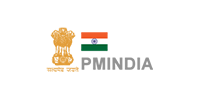Demographics
As of the 2011 census, Raipur Municipal Corporation had a population of 1,010,087, of which 519,286 are males and 490,801 are females —a sex ratio of 945 females per 1000 males, higher than the national average of 940 per 1000.[3] 124,471 children are in the age group of 0–6 years, of which 64,522 are boys and 59,949 are girls —a ratio of 929 girls per 1000 boys. There are 769,593 literates (420,155 males, 349,438 females). The effective literacy was 86.90%; male literacy was 92.39% and female literacy was 81.10%, significantly higher than the national average of 73.00%.
The urban agglomeration had a population of 1,122,555, of which males constitute 578,339, females constitute 544,216 —a sex ratio of 941 females per 1000 males and 142,826 children are in the age group of 0–6 years. There are a total of 846,952 literates with an effective literacy rate of 86.45%.[2]
As an important regional centre and a city with a history stretching back more than a thousand years, Raipur has attracted people from different parts of Madhya Pradesh and neighbouring states. The population includes local ethnic Chhattisgarhis, North Indians, South Indians, and a few people from the North East. Local ethnic Chhattisgarhi comprises Kalar, Kurmi, Swarnkar, Teli, Koshta and Satnami communities. The city is also inhabited by the trading communities like Jayaswals, Baniyas, Agarwals, Jains, Gujaratis, and Marwaris. Due to close proximity with Odisha there are large numbers of Odia speaking population found in the city as well as in the state. The city is also home to an immigrant population that includes Sindhis. It also has a sizeable Bengali, Telugu, Malayalee and Maharashtrian population. Majority of the population in Raipur is Hindu. Muslims, Sikhs and Christians are minorities. Muslims primarily reside in such areas as Moudhapara (occupied by the immigrants from UP and Bihar), Baijnathpara, Chota Para,Raza Talab,Sanjay Nagar, Momin Para (Shia Islam community) and Byron Bazaar (which is named after a Briton who is supposed to have formed the place; Byron Bazar was once mostly inhabited by the Muslims from the "Madras Paltan" i.e. those serving in the British Army (Madras Regiment), and had occupied Byron Bazaar as a result of their regiment getting disbanded).The Sikhs residing at pandri, govindnagar, shyamnagar & tatibandh areas. The Christian population is scattered around the city. This city is also populated by the people of Kanwar and Gond community who are primarily tribals.














